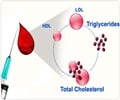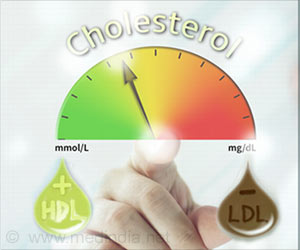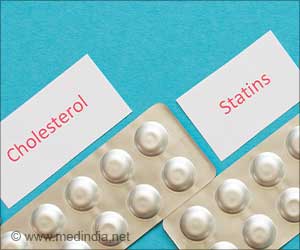A study involving more than 16,000 U.S. children and adolescents, revealed a decrease in average total cholesterol levels over the past 2 decades.

Brian K. Kit, M.D., M.P.H., of the Centers for Disease Control and Prevention, Hyattsville, Md., and colleagues conducted a study to examine the trends in serum lipid concentrations among children and adolescents in the U.S. The study included data on 16,116 youths ages 6 to 19 years who participated in the nationally representative National Health and Nutrition Examination Survey (NHANES) during 3 time periods: 1988-1994,1999-2002, and 2007-2010. Among the measures analyzed for all the participants were average serum total cholesterol (TC), non-HDL-C, HDL-C; and among adolescents only (ages 12-19 years), LDL-C and geometric average triglyceride levels. Trends in adverse lipid concentrations were reported for TC levels of 200 mg/dL and greater, non-HDL-C levels of 145 mg/dL and greater, HDL-C levels of less than 40 mg/dL, LDL-C levels of 130 mg/dL and greater, and triglyceride levels of 130 mg/dL and greater.
The researchers found that among youths ages 6 to 19 years between 1988-1994 and 2007-2010, there was a decrease in average serum TC from 165 mg/dL to 160 mg/dL and an increase in average serum HDL-C from 50.5 mg/dL to 52.2 mg/dL. There was also a decrease in the average serum non-HDL-C levels during this time period. "Generally, the sex-, age-, and race/ethnicity-specific trends for TC, HDL-C, and non-HDL-C were similar in direction to the overall trends and consistent with a favorable trend, although for each group, the magnitude was not the same and the trend was not always significant," the authors write.
Between 1988-1994 and 2007-2010, there was a decrease in prevalence among youths ages 6 to 19 years of elevated TC from 11.3 percent to 8.1 percent and non-HDL-C from 13.6 percent to 10 percent. Prevalence of low HDL-C was 17.3 percent in 1988-1994 and 14.8 percent in 2007-2010, a nonsignificant decrease. Among adolescents, there was a decrease in prevalence of elevated LDL-C and triglycerides between 1988-1994 and 2007-2010 and a decrease in average serum LDL-C from 95 mg/dL to 90 mg/dL and geometric average serum triglycerides from 82 mg/dL to 73 mg/dL.
In 2007-2010, 22 percent of youths had either a low HDL-C level or high non-HDL-C, which was lower than the 27.2 percent in 1988-1994.
The authors also found that age- and race/ethnicity-adjusted TC was 4.3 mg/dL lower for males and 6.5 mg/dL lower for females in 2007-2010 than in 1988-1994. Males and females who were non-Hispanic black or Mexican American, and also females who were non-Hispanic white had a lower age-adjusted TC in 2007-2010 than in 1988-1994. Age- and race/ethnicity- adjusted HDL-C was higher for males and females in 2007-2010 than in 1988-1994.
Advertisement
"The recently released Expert Panel on Integrated Guidelines for Cardiovascular Health and Risk Reduction in Children and Adolescents provides recommendations for preventing the development of cardiovascular risk factors including optimizing nutrition and physical activity and reducing exposure to tobacco smoke. Specific screening approaches, including universal screening at select ages and management of adverse lipid concentrations, have also been detailed in these recent guidelines for youths. Future research from longitudinal studies or mortality-linked data, including NHANES, may include examining clinical outcomes for cardiovascular disease, including cardiovascular mortality, based on lipid concentrations present during childhood," the authors conclude.
Advertisement
Sarah D. de Ferranti, M.D., M.P.H., of Harvard Medical School and Boston Children''s Hospital, Boston, comments on the findings of this study in an accompanying editorial.
"Further research is needed to investigate the hypothesized contributors to change in childhood and adolescent lipid levels. Better understanding is needed about dietary trends and physical activity during childhood, areas that were not explored in the study by Kit et al but could be assessed using NHANES data. However it seems clear that population-wide efforts to alter cardiovascular disease [CVD] risk have potential to influence health risks. Examples of other interventions that could have positive population-level effects on health include taxation of carbonated beverages, improved access to water in schools and in the workplace, and environmental changes to promote daily physical activity. Improvements in child and adolescent lipid values over the past 2 decades are significant and may portend improved CVD outcomes for the future, but much work should be done to better understand the changes and to build upon them."
Source-Newswise














